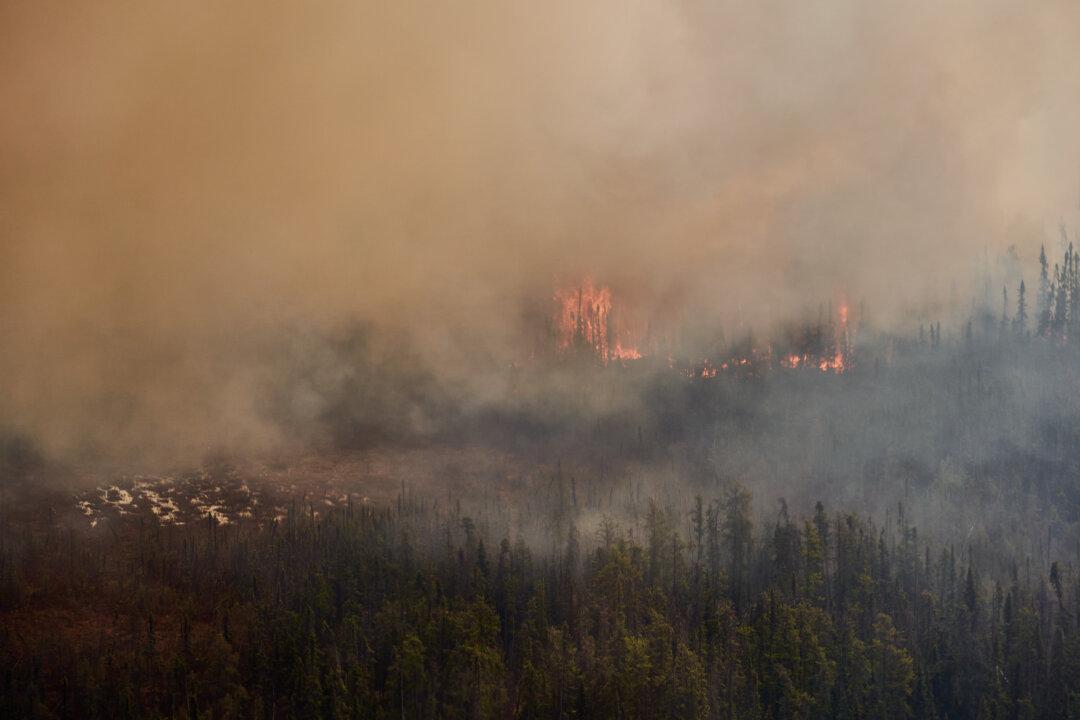The Manitoba Wildfire Service says over 600 people in northwest Manitoba who evacuated approaching fire last week can return home starting Sunday morning thanks to firefighters’ efforts along with cooler weather and some rain.
Residents of Cranberry Portage and other communities had to flee their homes on May 11 because of a rapidly advancing fire that came less than two kilometres from the community.





